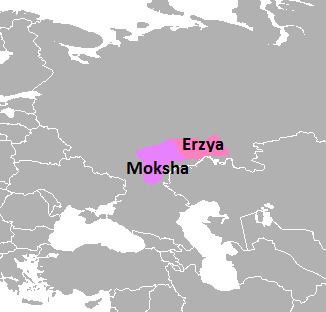Glottolog: mord1256 | Linguistic classification: UralicMordvinic | |
 | ||
Subdivisions: ErzyaMoksha?Meshcherian | ||
The Mordvinic languages, alternatively Mordvin languages, or Mordvinian languages (Russian: Мордовские языки, Mordovskiye yazyki, the official Russian term for the language pair), are a subgroup of the Uralic languages, comprising the closely related Erzya language and Moksha language. Previously considered a single "Mordvin language", it is now treated as a small language family. Due to differences in phonology, lexicon, and grammar, Erzya and Moksha are not mutually intelligible, to the extent that the Russian language is often used for intergroup communications.
The two Mordvinic languages also have separate literary forms. The Erzya literary language was created in 1922 and the Mokshan in 1923.
Phonological differences between the two languages include:
The medieval Meshcherian language may have been Mordvinic, or close to Mordvinic.
